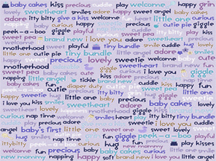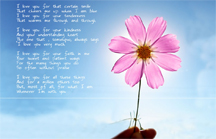 “Brevity is the soul of wit,” and the same may be said of literature—especially of verse and short story. The days of canto poems are gone. I doubt very much if an author could publish a poem the length of “Mahabharata” unless he paid for its publication. (If you are a geek for facts like me, Mahabharata is an epic poem containing 100,000 couplets in some 18 books. You can waste a year of your free time reading this epic poem at http://www.mahabharataonline.com/).
“Brevity is the soul of wit,” and the same may be said of literature—especially of verse and short story. The days of canto poems are gone. I doubt very much if an author could publish a poem the length of “Mahabharata” unless he paid for its publication. (If you are a geek for facts like me, Mahabharata is an epic poem containing 100,000 couplets in some 18 books. You can waste a year of your free time reading this epic poem at http://www.mahabharataonline.com/).
Long form
You will notice that writers and poets of certain literary magazines have the privilege of writing at length. These days editors of literary magazines (both online and offline) reject poems exceeding eight stanzas. Even though the Internet allows poets and writers to write at length, our writing style has become more condensed for the benefit of readers.
 Therefore, the skill to condense the very essence of thought is invaluable. By careful study and thought, you can cut a poem down to half its original length. If possible, let each line express an idea. Quatrains—a stanza, or a complete poem consisting of four lines of verse—are in demand because editors can use them to fill out a page which a prose article does not complete. One of the best
Therefore, the skill to condense the very essence of thought is invaluable. By careful study and thought, you can cut a poem down to half its original length. If possible, let each line express an idea. Quatrains—a stanza, or a complete poem consisting of four lines of verse—are in demand because editors can use them to fill out a page which a prose article does not complete. One of the best
poets whom I admire, expresses himself almost entirely in this manner. I refer to Father Charles, “the poet-priest.” His quatrains are usually flawless gems, embodying lofty sentiments. Still you will find many subjects which require a greater canvas-perhaps four, six or eight stanzas to do them justice.
Short stories
Readers love short stories—perhaps as an excuse not to read a full-length book because of time constraints. A short story concisely written, well-told, and devoid of superfluities, will usually find a market. You can find many magazines and journals, both online and in print, devoted exclusively to short stories. Most editors are glad to receive completed short stories for possible publication. But be sure your submission is in proper shape. Explanatory notes and preliminary remarks are out of date—if they were ever in. Begin your story with the first line, and when you have told it, stop.
 Readers are intelligent. They detest wading through irrelevance, such as a short story’s genealogical table or a lengthy introduction of something that happened long ago. Padding a short story with nonsense will exhaust your reader’s patience. The first one or two sentences should put the reader in the right frame of mind to enjoy the story when he finally reaches it. Be brief in your construction of a short story. A story of (at most) three thousand words will usually tell your tale. Above 4,000 words, you are treading on dangerous ground. A story from 1,500 to 2,000 words stands far more chance of acceptance than one of twice that length. And here again, editors and readers plea for brevity. Arrange your incidents so that readers do not experience any labored interludes, and tell your story in good, plain English.
Readers are intelligent. They detest wading through irrelevance, such as a short story’s genealogical table or a lengthy introduction of something that happened long ago. Padding a short story with nonsense will exhaust your reader’s patience. The first one or two sentences should put the reader in the right frame of mind to enjoy the story when he finally reaches it. Be brief in your construction of a short story. A story of (at most) three thousand words will usually tell your tale. Above 4,000 words, you are treading on dangerous ground. A story from 1,500 to 2,000 words stands far more chance of acceptance than one of twice that length. And here again, editors and readers plea for brevity. Arrange your incidents so that readers do not experience any labored interludes, and tell your story in good, plain English.



